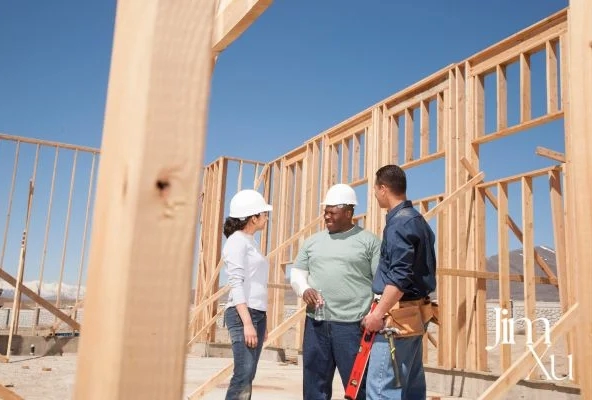Buying a house is one of life’s most exciting yet challenging decisions. Whether you’re purchasing your first home or making a new investment, this comprehensive guide, with expert insights from Jim Xu, will lead you smoothly through each stage. Follow this detailed home buying guide to navigate confidently and successfully into homeownership.
Step by Step Guide To Buying A House
1. Understanding Your Motivation and Goals
First, take a moment to deeply consider why you’re interested in buying a home. Are you aiming for long-term stability, looking to invest, or seeking a personal sense of independence? Reflecting clearly on these motivations helps you make informed and satisfying decisions.
Once you’ve identified your main goal, it’s time to clarify your financial and personal objectives. Consider aspects such as location, proximity to schools and workplaces, home size, neighborhood safety, and community amenities. For instance, if your family is growing, your priority might be finding a home near quality schools and parks.
2. Evaluating Your Financial Health
A thorough examination of your financial situation is the foundation of a successful home purchase process.
- Assessing Your Budget: Begin by analyzing your income, expenses, and existing debts. Understanding your financial standing will help determine a comfortable price range for your new home. Remember to account for additional costs such as property taxes, insurance, and maintenance.
- Checking Your Credit Score: Your credit score plays a pivotal role in securing favorable mortgage terms. Lenders use this score to assess your creditworthiness. Obtain your credit report from major bureaus like Equifax, Experian, and TransUnion. If your score is lower than desired, take steps to improve it by paying bills on time, reducing debt, and avoiding new credit inquiries.

Also see: Single Family House In Richmond
3. Saving for a Down Payment
Saving for a down payment is crucial in your home buying process. Generally, lenders recommend a 20% down payment to avoid private mortgage insurance (PMI), which increases your monthly mortgage payments. However, don’t be discouraged if saving this amount feels overwhelming because various loan programs offer flexibility:
- Conventional Loans: Some lenders accept down payments as low as 3%.
- FHA Loans: Require a minimum of 3.5% down.
- VA Loans: Available to veterans with no down payment required.
- USDA Loans: For rural properties, often with zero down payment.
Research local and state assistance programs that offer grants or low-interest loans to first-time buyers, potentially easing the financial burden.
4. Creating a Realistic Housing Budget
When budgeting for your new home, consider more than just the purchase price and monthly mortgage. Include all additional expenses, such as property taxes, homeowner’s insurance, homeowners association (HOA) fees, utilities, and regular home maintenance costs. A good practice is to set aside a buffer fund for unexpected expenses, ensuring you’re financially comfortable even during emergencies.
Also see: Townhouse Richmond
5. Getting Pre Approved for a Mortgage
To clearly understand your budget and strengthen your negotiating power with sellers, get preapproved for a mortgage before house hunting. Talk with multiple lenders to compare mortgage rates and terms, ensuring you secure the most favorable option. Remember, a preapproval letter makes you appear more credible to sellers, especially in competitive markets.
6. Choosing the Right Real Estate Agent
A knowledgeable real estate agent is indispensable in simplifying the home buying process. Partner with an experienced local agent like Jim Xu, who understands your desired area’s housing market trends and can negotiate effectively on your behalf. Be sure to review their professional track record and openly communicate your needs, ensuring your agent aligns with your goals.
7. Finding Your Ideal Home
With pre-approval in hand and an agent to guide you, the search for your dream home begins.
Defining Your Criteria
List your must haves and deal breakers. Consider factors such as:
- Location: Proximity to work, schools, public transportation, and amenities.
- Size and Layout: Number of bedrooms, bathrooms, and overall square footage.
- Condition: Move-in ready or a fixer-upper.
- Neighborhood: Safety, community vibe, and future development plans.
Exploring Neighborhoods
Visit various neighborhoods to get a feel for the community. Attend open houses and schedule private viewings. Pay attention to details like traffic patterns, noise levels, and local facilities.
Read more: Starter Home vs Forever Home

8. Making a Winning Offer
Once you’ve found a home that meets your criteria, it’s time to make an offer:
Crafting a Competitive Offer
Work with your agent to determine a fair offer price based on comparable properties and market conditions. Your offer will typically include:
- Offer Price: The amount you’re willing to pay.
- Contingencies: Conditions that must be met for the deal to proceed, such as financing approval and satisfactory inspection.
- Earnest Money Deposit: A sum of money demonstrating your serious intent to purchase.
Negotiation
Be prepared for counteroffers from the seller. Your agent will negotiate terms to reach a mutually agreeable deal. Flexibility and clear communication are key during this phase.
9. Conducting a Thorough Home Inspection
A home inspection safeguards you from unexpected and costly repairs. Hire a reputable, licensed inspector to examine the home’s structural integrity, plumbing, electrical systems, and other crucial components. If significant issues emerge, you can renegotiate the selling price, request repairs, or even withdraw your offer.
10. Negotiating Repairs and Credits
If the inspection identifies issues, communicate clearly with the seller about repairs or compensation. Your real estate agent, Jim Xu, can skillfully negotiate these points, ensuring you receive fair treatment. Keep in mind that some sellers may prefer to offer a credit rather than complete repairs themselves.

Read more: Best Places to Invest in Canada Real Estate
11. Finalizing Your Mortgage
With a satisfactory inspection and appraisal, proceed to finalize your mortgage.
- Submitting Documentation: Provide your lender with necessary documents, including proof of income, employment verification, and asset statements. Prompt and accurate submission can expedite the underwriting process.
- Locking in Your Interest Rate :Decide whether to lock in your interest rate to protect against market fluctuations. Your lender can advise on the best timing based on current trends.
12. Final Walk Through
The final walk through is your last chance in our Guide To Buying A House to ensure the property meets the conditions agreed upon. Schedule this inspection shortly before closing and verify all negotiated repairs and conditions are complete. Address any discrepancies immediately through your agent to avoid delays.
13. Closing on Your New Home
Closing is the final step in Home buying guide. Carefully review your closing disclosure form for accuracy, understanding all financial obligations clearly. At closing, you’ll sign several legal documents, finalize your mortgage, and receive the keys to your new home. Congratulations!
14. Post Purchase Considerations
Homeownership extends beyond the purchase. Plan for ongoing responsibilities:
- Maintenance: Regular upkeep preserves your home’s value and prevents costly repairs.
- Budgeting: Adjust your budget to accommodate mortgage payments, utilities, and unexpected expenses.
- Community Engagement: Get involved in your new community to build connections and stay informed about local developments.
Read more: Negotiating When Buying A House in Canada
Home Buying Checklist
To summarize the key points discussed in this Home buying guide, the following checklist outlines are essential steps in the home buying process:
| Step | Description |
| Define Clear Goals | Clarify your reasons for purchasing a home and clearly outline your needs and desires. |
| Improve Your Credit Score | Enhance your credit score by making timely debt payments and reducing existing debts to secure better mortgage terms. |
| Save for a Down Payment | Accumulate a suitable amount for a down payment; typically, 20% of the home’s price is recommended, though options with lower down payments are available. |
| Budget Realistically | Consider all costs associated with purchasing and maintaining a home, including taxes, insurance, and repairs, and set a realistic budget accordingly. |
| Get Mortgage Preapproval | Obtain preapproval for a mortgage from financial institutions to demonstrate your purchasing power and credibility to sellers. |
| Choose a Qualified Agent | Select a professional and knowledgeable real estate agent to assist you throughout the search and purchase process. |
| Visit Homes and Neighborhoods | Tour various homes and explore neighborhoods to make an informed decision about the best fit for your needs. |
| Make a Strategic Offer | Work with your real estate agent to present a competitive and well-considered offer on a chosen property. |
| Conduct Inspections | Perform necessary technical and specialized inspections to ensure the property’s condition meets your expectations. |
| Negotiate Repairs Effectively | If needed, negotiate with the seller regarding necessary repairs or potential price adjustments. |
| Finalize Mortgage Approval | Complete the mortgage approval process after reaching an agreement with the seller. |
| Complete the Final Walk-Through | Conduct a final walk-through of the property before closing to ensure everything is as agreed upon. |
| Close on Your Home | Sign the necessary documents to finalize the purchase and transfer ownership of the property to your name. |
| Plan Ongoing Expenses | Prepare for monthly costs and home maintenance to manage your finances effectively as a homeowner. |
This Home Buying Checklist serves as a quick reference to guide you through the home buying journey.
Read more: Benefits of owning a home
Conclusion
Purchasing your home is a significant milestone. Following this Home buying guide and leveraging expertise from trusted professionals like Jim Xu ensures you approach homeownership confidently and securely. Remember, this journey is not just about acquiring property, it’s about creating a space where your life unfolds and memories are made.







